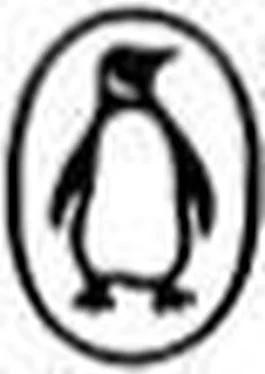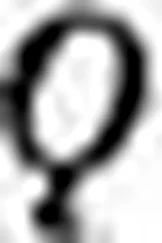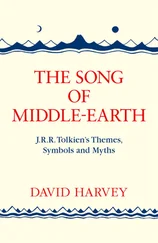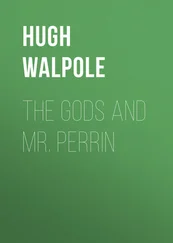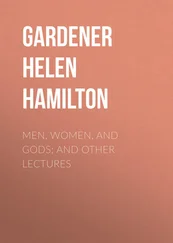Davidson, H. - Gods and Myths of Northern Europe
Здесь есть возможность читать онлайн «Davidson, H. - Gods and Myths of Northern Europe» весь текст электронной книги совершенно бесплатно (целиком полную версию без сокращений). В некоторых случаях можно слушать аудио, скачать через торрент в формате fb2 и присутствует краткое содержание. Жанр: Старинная литература, на английском языке. Описание произведения, (предисловие) а так же отзывы посетителей доступны на портале библиотеки ЛибКат.
- Название:Gods and Myths of Northern Europe
- Автор:
- Жанр:
- Год:неизвестен
- ISBN:нет данных
- Рейтинг книги:5 / 5. Голосов: 1
-
Избранное:Добавить в избранное
- Отзывы:
-
Ваша оценка:
- 100
- 1
- 2
- 3
- 4
- 5
Gods and Myths of Northern Europe: краткое содержание, описание и аннотация
Предлагаем к чтению аннотацию, описание, краткое содержание или предисловие (зависит от того, что написал сам автор книги «Gods and Myths of Northern Europe»). Если вы не нашли необходимую информацию о книге — напишите в комментариях, мы постараемся отыскать её.
Gods and Myths of Northern Europe — читать онлайн бесплатно полную книгу (весь текст) целиком
Ниже представлен текст книги, разбитый по страницам. Система сохранения места последней прочитанной страницы, позволяет с удобством читать онлайн бесплатно книгу «Gods and Myths of Northern Europe», без необходимости каждый раз заново искать на чём Вы остановились. Поставьте закладку, и сможете в любой момент перейти на страницу, на которой закончили чтение.
Интервал:
Закладка:
… by pouring river water on heaps of burning wood, and there uniting the two opposed elements, fire and water.
Thus we have the same conjunction of water, salt, and fire as in the creation myth, associated with a definite holy place in Germany. Another possible origin for the impressive picture of life forming from the union of intense heat and intense cold might however be sought in the volcanic conditions in Iceland. Eruptions of boiling lava, flames, and steam have recurred there at fairly frequent intervals throughout historic times, and must have been known in the Viking age. Iceland is unique among volcanic regions in the meeting of cold and heat which takes place when the ice-covered volcanoes erupt, and the snow and ice melt in the burning flood of lava to send down disastrous floods to the plains below. This is a point to be discussed again in the section on the destruction of the world described in Vǫluspá .
There seems to be no trace in Scandinavian sources of the other widespread form of the creation legend, deriving the world from a primeval egg, whose upper shell forms the heavens and lower shell the earth. This myth is found in Egyptian, Greek Orphic, and Mithraic tradition, and it has been preserved in Finland, in the story of Väinämöinen creating the world from an egg which a duck laid on his knee in the midst of the watery wastes. 1It appears that the traditional ideas about the creation which have inspired Vǫluspá and other Eddic poems are distinct from those which reached Finland.
The slayers of Ymir are said to be three brothers, Odin, Vili, and Ve. There is a parallel to this in Manichean sources, where a demon was slain by three brother gods in order to form the world. Again however a late borrowing seems unlikely, as there are traces of Odin’s brothers elsewhere in Scandinavian tradition. In Lokasenna , Frigg is accused of taking Vili and Ve as lovers, and again in Ynglinga Saga there is an allusion to the long absence of Odin during which he left his brothers to rule and they took over his wife as well as the kingdom. The names of the brothers are known to the skaldic poets, and Vili’s name has two genitive forms, Vilja and Vilis, so that it must have been known for a considerable time in the north. The names could be interpreted as ‘will’ and ‘holiness’, but can hardly be mere abstractions in imitation of the Christian Trinity, for reasons given above. We do not know the origin of the strange setting which Snorri gives to the Prose Edda , when Gylfi meets three mysterious powers, called High One, Just-as-High, and Third, who sat on high-seats, one above the other, and replied to his questions with wit and irony. This may be based on memories of the brothers of Odin.
A trio of gods appears once more in the story of the creation of man. Here Odin’s companions are Hoenir, the silent god, and Lodur, of whom we know almost nothing. According to Vǫluspá , they found two trees on the seashore, Askr and Embla, and breathed into them the gift of life. Odin gave them spirit, Hoenir understanding, and Lodur senses and outward form (although the exact meaning of the terms used is debatable). The name Askr links up with the World Ash, and also with an Anglo-Saxon tradition that Aesc was the founder ancestor of the tribe of the Aescingas. Embla may be the same as elmla , ‘the elm’, but if so the reason for choosing this tree is not clear. We have also the other myth of two human beings emerging from a tree to people the world, found in the Edda poems. Their names are given as Líf and Lífþrasir, and they are said to shelter in the World Tree and to be nourished by dew from its branches while the rest of the world suffered the great winter. Snorri however interprets this to mean that the two remained in the tree throughout the destruction of the worlds, and repeopled the earth after the time of terror was over. If indeed we are to view the whole series of events as a recurring cycle, as seems to be the case, then there must be a new creation after every destruction of the world. It is in accordance with the teaching concerning the World Tree that it should be from here that life once more emerges after the catastrophe.
3. The End of the World
The most memorable stanzas of Vǫluspá are those which describe the doom of the gods, and Snorri has paraphrased them into noble prose in his account of Ragnarok. This doom is to be first foreshadowed by the great winter ( fimbulvetr ), which is to last three years on end, and by suffering, wickedness, and bitter warfare among men. Then there are to be mighty earthquakes, darkening of the sun, and the breaking loose of the monsters from their bonds. The serpent will leave the sea, and cause the waters to rise and overwhelm the earth. The giants will arrive in their ship, made from the uncut nails of the dead, and another band under the leadership of Surt will come by land and ride over the rainbow bridge to storm Asgard. The armies of the gods and the giants will meet on a great plain for the final battle.
In this conflict all the great gods must be destroyed, and the monsters with them. Only the sons of the gods survive, and Surt too is left to destroy earth and heaven with fire. Then at the close of Vǫluspá comes the calm and lovely picture of the renewal of life, when earth rises green and fertile from the sea, and the sons of the gods remember the past only as men recall an evil dream.
In this account only small additions here and there seem to be due to Snorri; the account of the time of destruction and the renewal that follows must be credited to Vǫluspá . Although the language of the poem is in many places obscure, and the clues to some of the allusions lost – for instance we can only guess at the identity of Gullveig who was three times burned by the Aesir – its imaginative strength is still potent for a modern reader. The conclusion of the poem has been taken by some to describe the triumph of Christianity over the old religion, but if this were the deliberate intention of the poet, surely he would have been more explicit. To read it in this way is to narrow down its significance. We have here a vision of death and rebirth which is the essence of all great religions, the eternal re-enactment of which Eliade writes. 1A whole-hearted Christian poet would scarcely have left us so objective a picture of the old faith, without rejection or condemnation, for such calm detachment would be a rare quality to find in the early days of Christianity. Snorri, it is true, possessed the double vision to a marked degree, but he took care to tell us clearly at the beginning of his book where his real allegiance lay. On the other hand, a heathen poet may well have sensed that the days of his gods were numbered, and there is something of this tragic sense of loss and of the passing of old truths in the moving lines of Vǫluspá .
We can be fairly confident at least that this poem is not a wild improvisation, bringing separate concepts together for the first time. There is sufficient scattered evidence to show that the conceptions of the end of the world here used were known elsewhere during the heathen period. In his justly famous study on Ragnarok, 2the Danish scholar Olrik turned to folklore to throw light on this poem. He found widespread folk-beliefs in Denmark and further afield to provide a fascinating commentary on it. The belief in a ship made of dead men’s nails, the devouring of the sun by a monster, the legend that the earth will finally sink into the sea, and the picture of a bound giant one day to break loose and destroy the world – all these can be found in folklore in Denmark and elsewhere. On a different level, parallels to Vǫluspá can be found in other mythologies. In Iranian tradition there is the myth of a terrible winter to come upon men, and certain men and beasts given shelter from it in the fold of Yima. 1Another Iranian belief was that finger-nails should be consecrated to the bird Askozushta, lest they should be used by the forces of evil. In Celtic literary tradition there is a myth of a battle between gods and giants on a vast plain, in which most of the gods will fall. There is no detailed resemblance here to suggest imitation or borrowing between Celtic and Norse peoples, but the fundamental concept behind the two accounts appears to be the same. We know that the Celtic peoples in the ancient world feared lest the earth would be destroyed. Strabo 2recorded that their Druids taught that ‘the soul and the world are indestructible, but one day fire and water will prevail’.
Читать дальшеИнтервал:
Закладка:
Похожие книги на «Gods and Myths of Northern Europe»
Представляем Вашему вниманию похожие книги на «Gods and Myths of Northern Europe» списком для выбора. Мы отобрали схожую по названию и смыслу литературу в надежде предоставить читателям больше вариантов отыскать новые, интересные, ещё непрочитанные произведения.
Обсуждение, отзывы о книге «Gods and Myths of Northern Europe» и просто собственные мнения читателей. Оставьте ваши комментарии, напишите, что Вы думаете о произведении, его смысле или главных героях. Укажите что конкретно понравилось, а что нет, и почему Вы так считаете.
